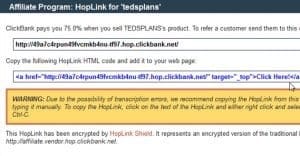The 15 Best Ways to Promote Your New Blog Posts

Content marketing is all about opportunity. When you’re publishing new content, you’re creating new chances to be ranked in the search engines, new chances for users to find what they’re looking for and new chances to sell your products. As with most marketing, you can’t be passive about it. Opportunity doesn’t knock; opportunity goes roaring down the road in a Ferrari, and if you’re not running to catch it, you can’t jump in when it slows down for a split second.
The “running to catch the Ferrari” in this analogy is you posting your blog posts around the Internet. When you expose your link to as many people as possible in as many places as possible, you broaden the net and convince users to visit your site. The wider your net, the more people will funnel in and the better your whole marketing experience will be. So where can you share your posts for maximum visibility?
1. Post on Facebook
The post to Facebook options is more of a placeholder for posting to every relevant social media stream you have. A basic tweet, a basic post on LinkedIn, a post in a board on Pinterest, these are all the basics. Any social network you use has a basic means of announcement and communication; post through it. You can schedule your posts to stagger them out throughout the day, or cluster them all at once for a unified message.
2. Add to Twitter Conversations
In addition to your normal tweet, look for any ongoing hashtags discussing the issue you’re blogging about. If there’s an ongoing conversation, look for a point to step in and offer your link. A simple “hey guys, I wrote a post about this subject, what do you think?” is more than enough. Avoid disrupting hashtag conversations with unrelated links, however.
Google+ has additional relevance in the form of Author tracking. Google has abolished the Authorship program, but it still keeps track of author information. When you’re concerned about that sort of thing, posting your content through an author account, rather than a business account, will form that additional explicit link.
4. Post in LinkedIn Groups
You can be a member of a number of groups at a time on LinkedIn, and it’s a good idea to take part in discussions in active groups. When you blog about a subject, scan through your groups and look for any that may be having a relevant discussion. If possible, encourage someone else to share your link so it’s not promotional. If not, just add the contribution as a relevant part of the discussion.
5. Visually Present Through Instagram
Instagram requires that you use an image as a header for every update you make, but you can add a link to a blog post in the description. Instagram also has a phenomenal engagement rate, so you can gain quite a bit of traffic from a single compelling image. Just avoid making your image something that’s completely unrelated to your blog post.
6. Post on Tumblr
Few brands use Tumblr, and even fewer use it effectively. Not everyone can be Denny’s. Still, if you can write something relevant to the audience on Tumblr, you can share it there for quite a bit of circulation. The best part about Tumblr, though, is that a single post can be resurrected and sent through multiple waves of viral traffic over the course of years.
7. Comment on Relevant Blog Posts
Unless you’re rapidly covering trends, chances are someone else has written a post about the subject you’re covering. You can spread your post around by finding those old posts and commenting on them with your new, updated link. Phrase it as a benefit for the blogger; this is new information for them to consider, a new perspective or a new argument.
8. Identify and Notify Resource Centers
Most industries have blogs or websites dedicated to creating lists of resources for people in those industries. You might find a blog with a popular top 20 list of resources, or a blogger who writes weekly roundups of the best posts written each week. Identify these resources and submit your site as a tip for them to consider. You won’t always make the list, but when you do, it can be a great boon.
9. Include in a Video
If you use YouTube as part of your marketing strategy, you can mention this new blog post you wrote in part of your video endcap. You can also include it in the description of a recently posted video. This is, of course, assuming you aren’t making a video dedicated to the topic. If you are, you can include your link and the content of the post in the video, as well as including the video in the blog post, for circular traffic generation. It’s not quite perpetual motion, but it’s close.
10. Notify Sources
Blog posts do not live in a vacuum. You probably linked to various sources throughout your post. Those sources will, if they check their analytics, see that new incoming link. They might not care, or maybe they will, but they might not check analytics frequently. You can get around this by sending messages to your sources notifying them that you use their awesome information in your post. This puts it more directly in front of them.
11. Influencer Exclusives
This is more of a technique useful for when your site has a lot of clout, but you can use it whenever it’s effective. Write a new post and then approach influencers in your industry about an exclusive place on one of your blogs. You might agree not to promote another blog through that post, or they might agree to focus their posts on your blog for a day. Strike a deal; the terms can be anything you desire.
12. Post on Industry Forums
Industries have forums, and forums can be great sources of traffic when used properly. Never spam, never post your link out of context and avoid starting a new topic just to promote your link. Instead, look for relevant, ongoing discussions and find a place to step in and post your link as a member, not as an advertiser.
13. Send Out to Your Mailing List
Your mailing list is a source of traffic that doesn’t rely on Google, so you’ve hopefully been spending plenty of effort building it up. Now’s the time to leverage that list by sending out a newsletter including your link. You can even segment into different lists; a daily digest, a weekly report, a monthly syndication, each with a link to your compelling new post.
14. Add to Reddit
Reddit has strict rules about using their platform for advertising, and the users are quick to leverage downvotes to smash content they don’t like. That said, it’s entirely possible to post your link as a contributing member, you just need the karma and the perspective necessary to know when it’s relevant and when it’s a nuisance.
15. Moving Man Broken Links
This is a great technique if you’re writing evergreen resources. Identify sites that point to a lesser resource or, better, an old resource that is blatantly out of date, incorrect or missing. Contact anyone who links to the dead source and tell them that their source is dead. Then link to your post and tell them you’ve created a replacement. You might be surprised at how much influence this brings in.
 ContentPowered.com
ContentPowered.com







Thanks for your details and explanations..I want more information from your side..please include some valuable ideas..I Am working in Dell used laptops for sale in chennaishould you need for any other clarification please call in this number.044-421 27512.